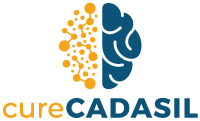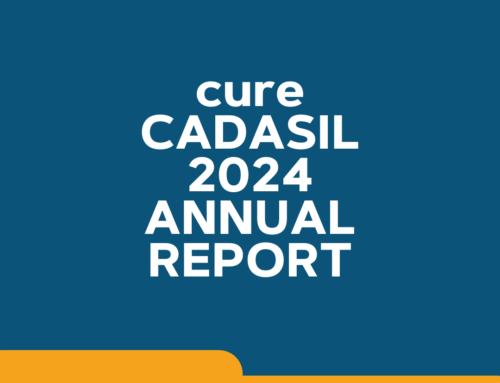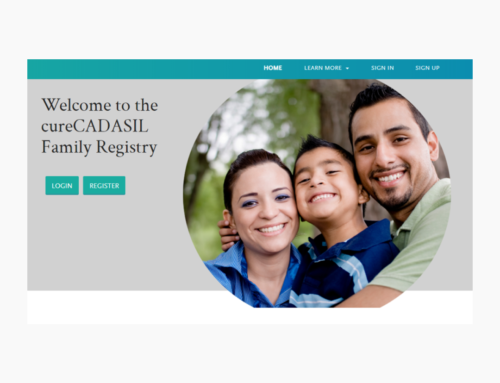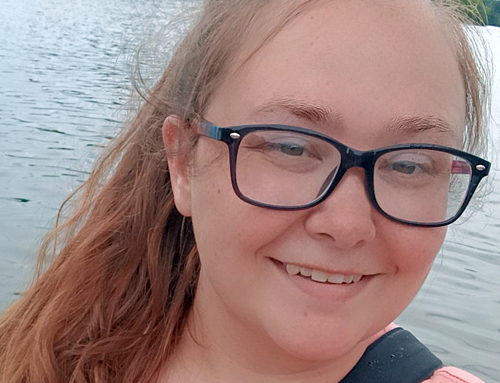by Janet Mills
Posted on April 17, 2013 at: globalgenes.org/the-stigma-of-rare-disease-how-do-you-tell-people-about-your-condition
Many rare diseases, like my own, have hard-to-pronounce names that evoke fear or boredom from people first hearing them. In my experience, eyes glaze over around the middle of “Cerebral Autosomal Dominant Arteriopathy with Subcortical Infarcts and Leukoencephalopathy.” Giving the acronym “CADASIL” for short doesn’t help much either, as most people have no clue what it is.
While I imagine a majority of us in the rare disease community have studied the science behind the big words of our conditions and have reasonable ideas of what they mean, the names of our diseases can sound like a foreign language to the average person. How do we get around that and explain what’s happening to us? I believe that bringing the words down to understandable levels can help avoid some of the stigma of having a rare disease. Here are some ideas I have used:
- If the disease is not contagious, say so. It is natural to shy away from someone who could make you sick. I sometimes joke, “I promise not to rub my brain on you.” Of course, no one can get CADASIL from touching my brain, but saying something to lighten the moment and assure the person of her safety can help. If the disease is contagious, giving information up front about how it is transmitted can relieve some anxiety.
- Keep it simple. Consider naming a less-rare condition that most people know and relating it to your disease. One of my lines is, “CADASIL is often misdiagnosed as MS (Multiple Sclerosis) because our brain images and some of our symptoms are similar.” I then go on to tell them how CADASIL is different from MS and share the importance of knowing which condition a person has. In the world of rare cancers, simply saying the word “cancer” will provide immediate understanding at a basic level. Then you can give more details about the specific type.
- Tell how the disease affects you. From your appearance and physical condition, it may be fairly clear what the disease is doing to you. Chances are, however, that a lot more is going on than what people can see. Some rare diseases cause “invisible disabilities” and, to someone unfamiliar with the disease, the patient looks perfectly fine. CADASIL is one of those. A CADASILian who has not yet had a stroke may not show any outward signs of the disease. If people could view our brain MRIs and get a glimpse of our compromised blood vessels, they would realize the seriousness of the condition. Instead of carrying around medical records and images, explaining how it feels to have your condition is helpful to others. When people tell me “You look great! Are you feeling better?” I tend to respond with something like “Thanks. Today is not a Couch Day. You won’t see me out and about on those days.” A reply like this is polite and subtle, reminding the person you are still sick.
- Carry cards about your disease. Online printers such as Vista Print (www.vistaprint.com) offer custom business cards for a low cost. A small image along with a brief explanation of the disease and a list of symptoms can fit on one side. I keep about a dozen CADASIL cards in my purse. They display information about the disease as well as contact details for cureCADASIL Association (www.curecadasil.org), so someone interested can find out more. At first I was too emotional and hesitant to hand out these cards. Over time, I have become more assertive and an advocate for my rare disease. Anytime I am asked where I work, I pull out a card to help explain why I don’t. I give the cards to friends who can’t remember what my disease is called. I offer them to strangers I’ve just met at a social gathering when they ask what I do, or to someone with whom I strike up a conversation.
There are many things we can do to relieve the stigma associated with rare diseases. The ideas here are just a sampling. The public is becoming more aware of us as a group, thanks to the efforts of Global Genes and other active organizations. We can help in our own ways by simply sharing our stories.

Janet Mills is a CADASIL patient and a trustee of cureCADASIL Association. She is active in several patient support groups online. Janet worked as an elementary school teacher for twenty years and is now on medical retirement. Her previous published writing credits include romantic contemporary and historical fiction.
******************************************************************************************
This article was published by Global Genes and then featured in the May 2013 issue of EMBRACE newsletter published by cureCADASIL Association. Thank you Janet for sharing your experience
